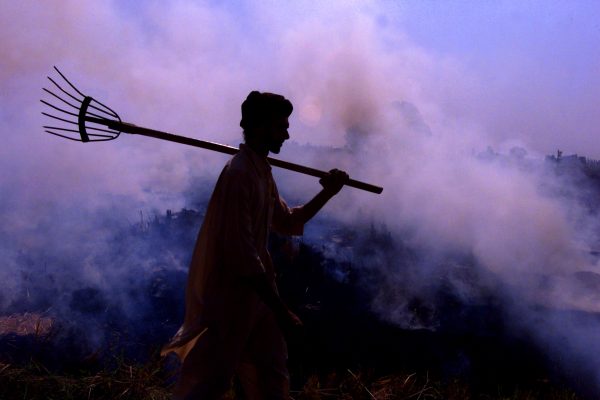To help rectify this issue, India can take lessons from Japan on ‘solar sharing’.
Declining farm incomes prompted the development of solar sharing models in Japan to incentivise farmers into adopting farming practices that include solar power generation on agricultural lands. The basic premise of the solar sharing model is to share the farmland for solar power generation and for crop production by planting crops under solar panels. Since 2013, these models have been adopted by farmers in the Chiba and Fukushima prefectures.
For India, it is an opportune moment to introduce solar sharing, especially in Punjab and Haryana. The plantation of paddy, a water-intensive crop, has resulted in the loss of groundwater in these states and there are problems of declining soil fertility due to indiscriminate use of fertilisers subsidised by the government. By introducing solar sharing, the Indian government can incentivise farmers to prevent the pollution of the air, water and land.
First, cost-sharing through government subsidies in the initial stage of solar installation through a ‘simple design solar panel structure’ which can be easily dismantled can motivate farmers to adopt a solar sharing farm model.
The government can utilise and re-direct a share of the fertiliser subsidy towards meeting the costs of setting up the solar infrastructure for farmers. In small farm holdings, which are predominant in India, the landholdings can be consolidated at the community level by farmers.
The costs of solar panel installations can be shared among the farmers or can be subsidised by the government, as is done by the Ministry of New and Renewable Energy (MNRE) for solar power generation projects. There are implementation challenges like the consolidation of small farms, which will require both financial support and substantial community engagement in the initial phases.
Second, the revenue generated from the sale of solar power to the grid through leveraging the feed-in-tariff scheme will be a value add for farmers. Prior to the maturation of crops, the revenue from clean energy will enable farmers to have a profitable business model. The revenue from solar power will help farmers supplement their incomes in case of crop failures. These revenue models are already in existence in the states of Gujarat and Karnataka and can be emulated in Punjab and Haryana with the active support of the MNRE and state governments.
Third, agricultural experts in India have been advising governments to shift water-intensive rice cultivation to eastern parts of India where water is abundant, rather than depleting the groundwater and aggravating the water stress in the western states of Punjab and Haryana. Punjab and Haryana only have a 12 and 4 per cent share respectively in total rice production in India. Changing the cropping patterns in Punjab and Haryana will not impact the self-sufficiency of food grains in India. Solar sharing farm models will provide further impetus to the Bringing Green Revolution to Eastern India (BGREI) program.
Fourth, the solar sharing model will incentivise farmers to change cropping patterns to high-value, low water-intensive crops which are more profitable. This shift will also reduce the huge food grain procurement burden on the government. Farmers will shift to crops that require less direct sunlight, mainly vegetable crops like tomatoes, eggplants and high-value medicinal crops like ginseng. Extension services with agricultural experts should be made available to farmers in the initial phase of shifting crops. The behavioural changes required on the part of farmers to move away from traditional crops will be a key challenge which can be addressed by strengthening agri-extension services.
Fifth, India can devise its own innovative ‘solar sharing’ models by engaging Farmer Producer Organisations and Farmer Cooperatives which can invest in solar infrastructure for farms and design environmentally sustainable agriculture across the country. Farm models similar to solar irrigation cooperatives operational in Gujarat can be initiated in Punjab and Haryana without the inclusion of irrigation to reduce water stress in the region.
Models can be devised to engage stakeholders in agricultural supply chains to meet the investment needs of solar farms. The MNRE has provided for central financial assistance of up to 50 per cent of the project costs in specified cases for industry partnerships for solar energy generation, which can be leveraged in solar sharing farm models.
To make solar sharing farm models a success, farmland regulation should be strictly adhered to and monitored to prevent diversion of land for industrial purposes and to maintain energy and environmental sustainability. By adopting solar sharing farms, India can avert impending health crises that will result from pollution in major cities like New Delhi and ensure clean energy, a healthy environment and food security.
Nikhila Menon is an independent economist based in Yokohama, Japan.

